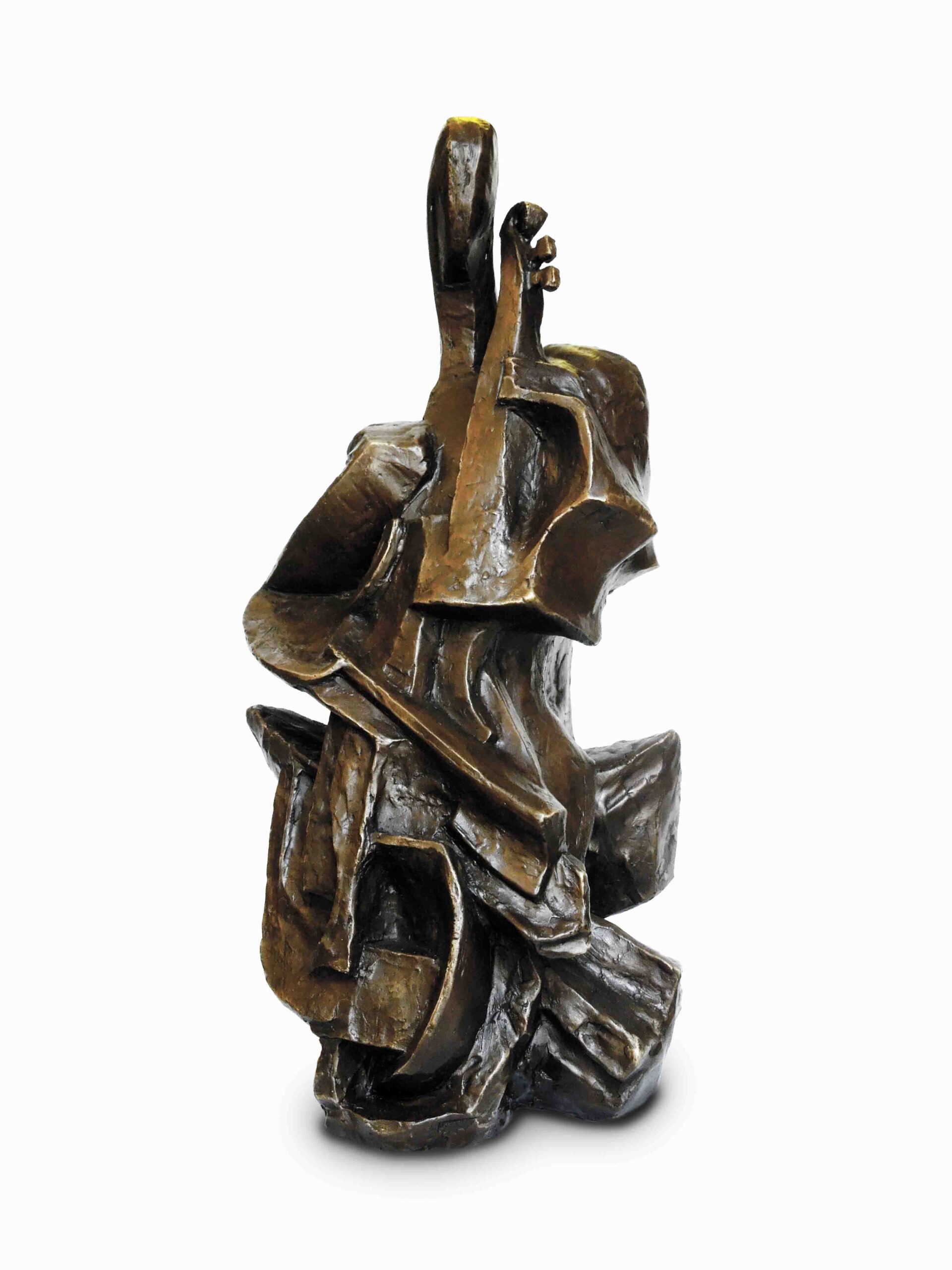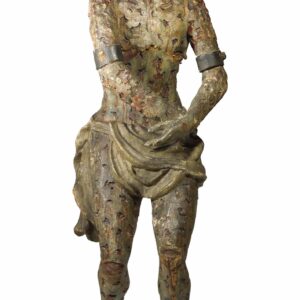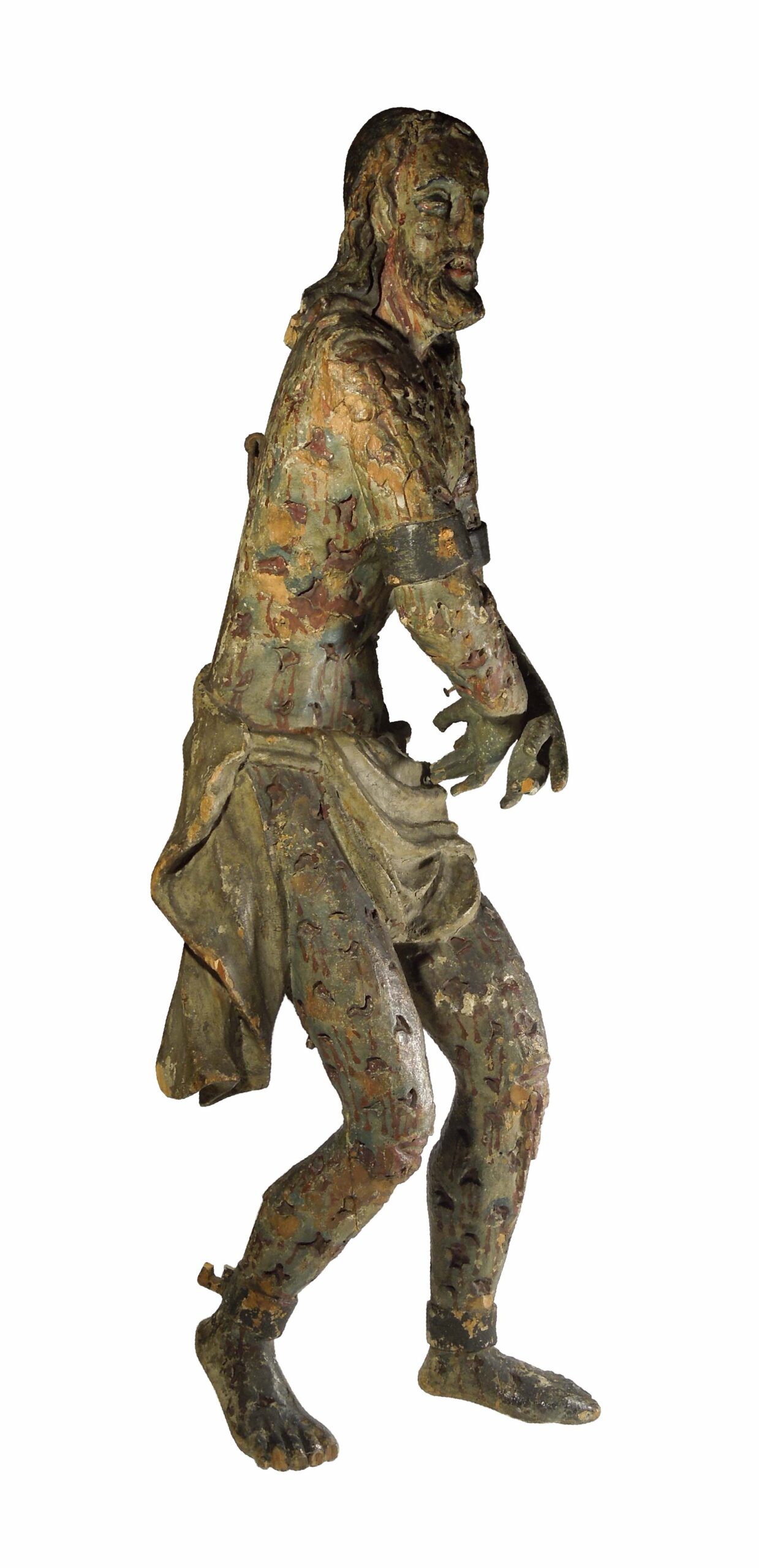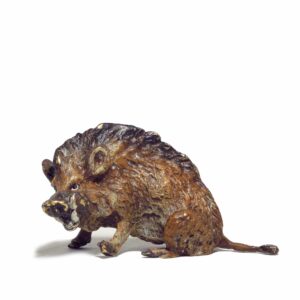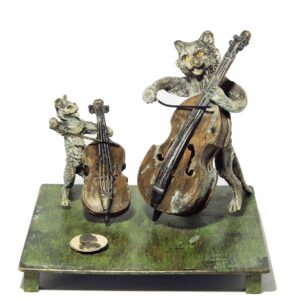Description
Otto Gutfreund
(August 3, 1889 Dvůr Králové – June 2, 1927 Prague)
Otto Gutfreund was a leading Cubist sculptor, a pioneer of Czech modern sculpture of world importance.
Born on August 3, 1889 in Dvůr Králové nad Labem as the fourth of five children to the Czech Jewish family of Karel and Emilie Gutfreund. During 1903-1906 he studied at the School of Fine Arts in Bechyně (ceramics studio). In 1905-1909 he attended the School of Applied Arts in Prague. In 1909 Gutfreund was fascinated by Antoine Bourdelle on the occasion of his exhibition in Prague organized by the SVU Mánes. In November he arrived in Paris, where he enrolled in Bourdelle’s sculpture courses at the Grande Chaumiere Academy. He meets Auguste Rodin, becomes interested in medieval art. In 1910 he leaves Bourdelle’s studio. He travels to England, Belgium, Holland and returns to Prague.
In 1911 he becomes a member of the Group of Fine Artists, exhibits Anxiety. In 1912 he participates in the second exhibition of the Group and presents significant works: Hamlet, Harmony, Concert. In 1913 and 1914 he uses the principles of analytical cubism in sculpture. He submits the third exhibition of the Group with works: Viki, Head with a Hat, Hamlet. He participates in exhibitions at the Der Sturm gallery in Berlin and the fourth exhibition of the Group in Prague. In 1914 he travels to Paris, where he meets Picasso, Gris, Apollinaire and the art dealer Kahnweiler.
At the time of the declaration of war he is in Paris, where he joins the Foreign Legion.
He participated in the battles of the Somme, L’Artois and in Champagne. In 1915, he signed a request with several Austro-Hungarian comrades to join the French army. After demobilization in 1916, he was imprisoned in Lyon after all requests for incorporation into the French army, as well as into the Czechoslovak Legion, were rejected.
Between 1916 and 1918, he was imprisoned in the Saint-Michel-de-Frigolet camp in Bouches-du-Rhône. In 1918, Gutfreund was transferred to a civilian camp in Blanzy and, after three years of imprisonment, settled in Paris, where he continued his interrupted work. He returned to Prague for two months to accept membership in Mánes. In 1920, he left Paris and lived between Prague and his native Dvůr Králové. The following year, he participated in the third exhibition of the Tvrdošíjní group in Prague, Brno and Košice. In 1924 he participated in the Exhibition of Czechoslovak Modern Art in Paris and the following year he was also at the International Exhibition of Decorative Arts in the Czechoslovak pavilion in Paris. In 1926 he won an audition for a professorship at the School of Applied Arts in Prague and participated in the Société Anonyme exhibition in New York.
On June 2, 1927, he tragically drowned in the Vltava River in Prague.

